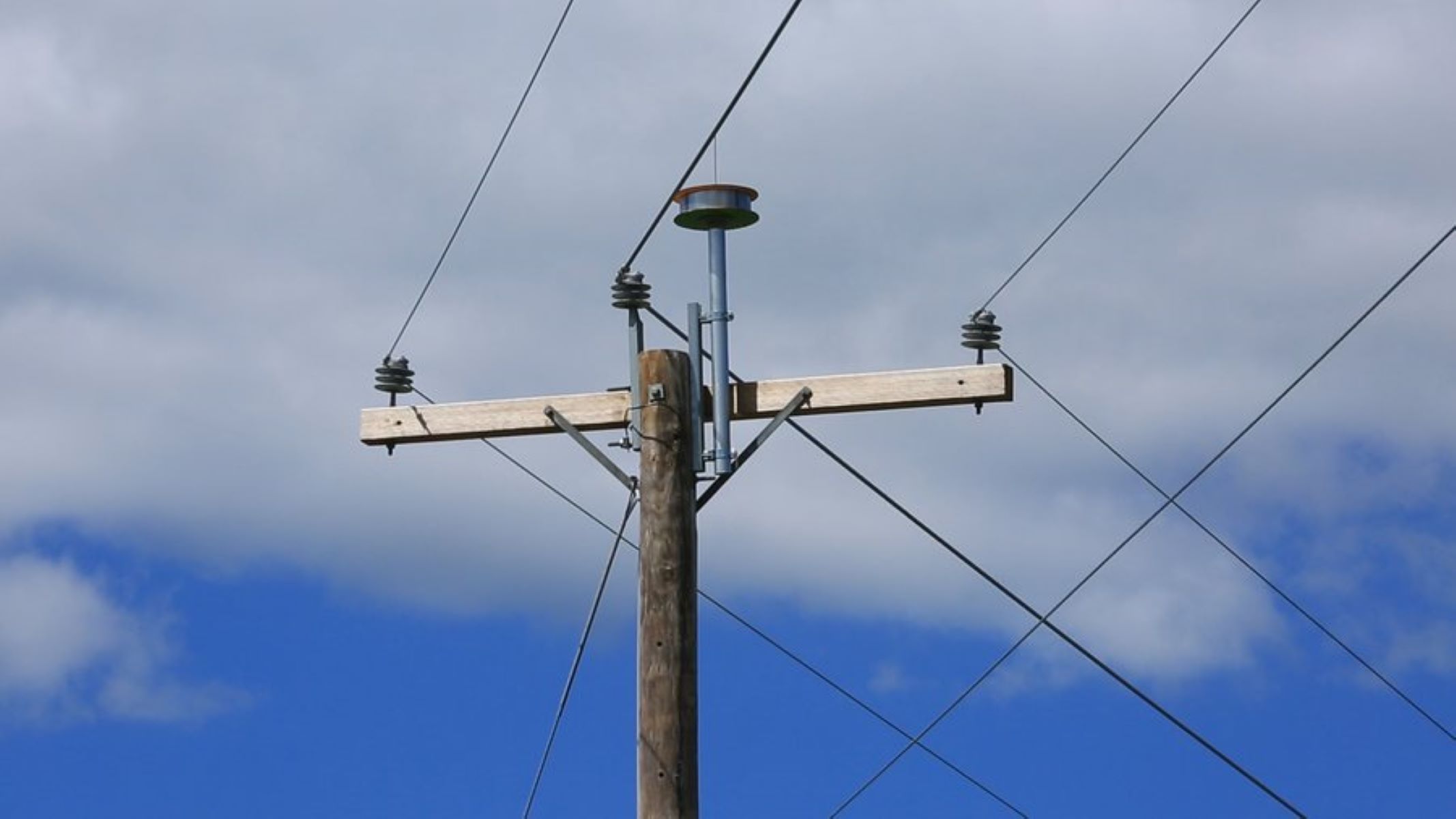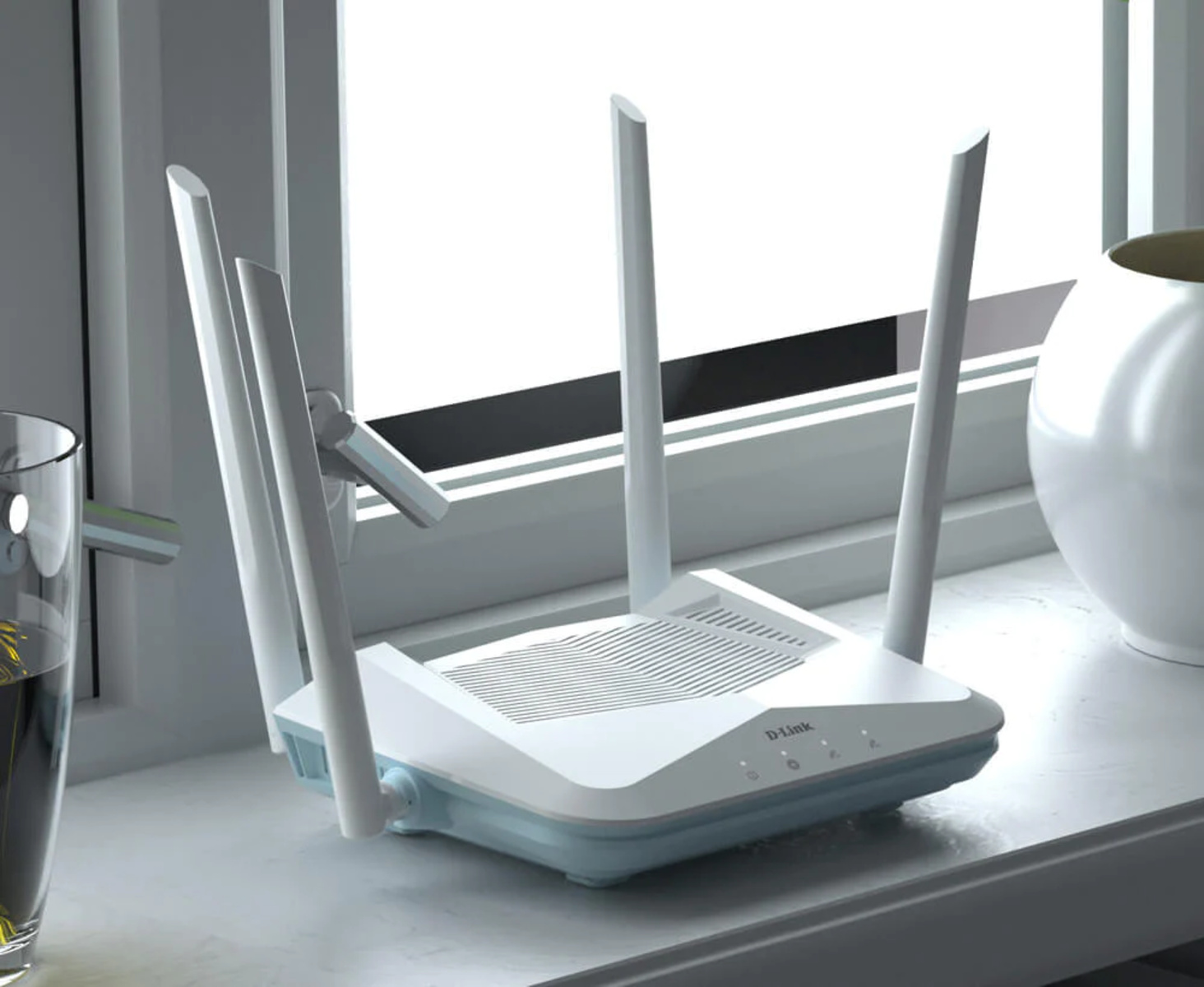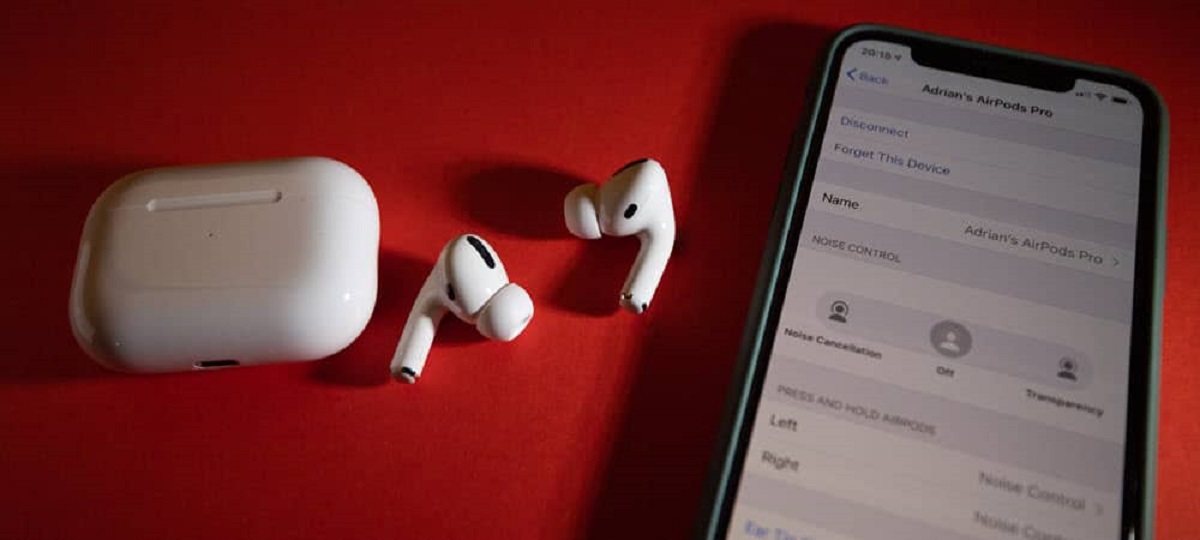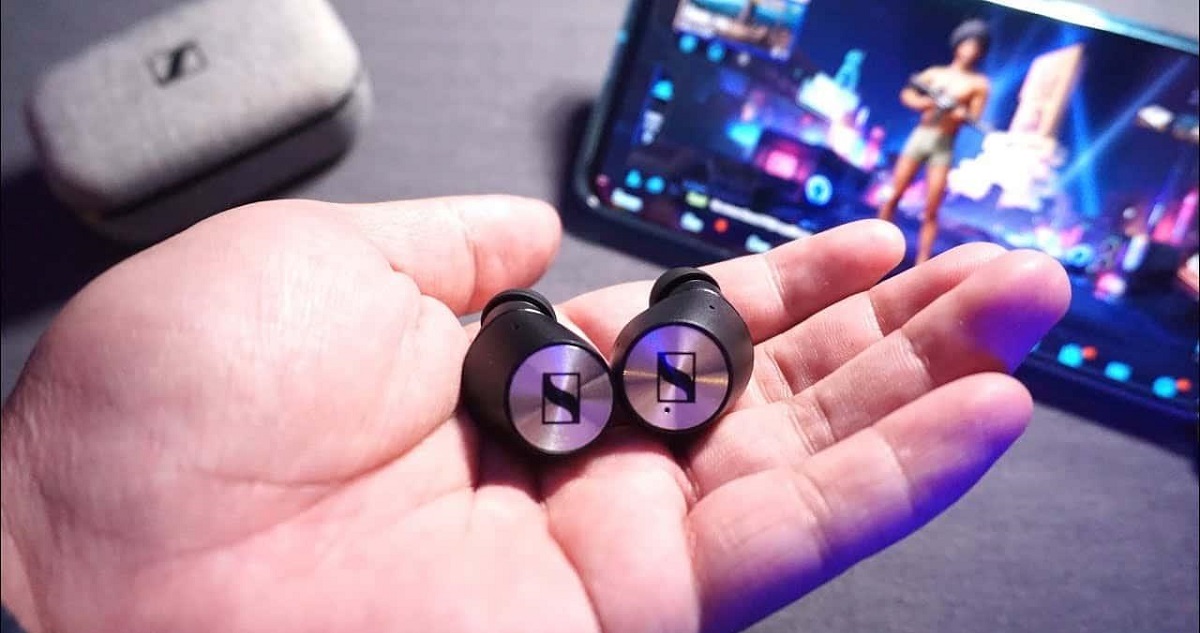Introduction
Welcome to the world of fixed wireless technology, a revolutionary solution that is changing the way we connect to the internet. In this digital age, having a reliable and fast internet connection is essential for both individuals and businesses. Traditional wired connections, such as cable or DSL, have dominated the market for years. However, there is another player in town – fixed wireless.
Fixed wireless is a cutting-edge internet connection technology that provides high-speed internet access without the need for physical cables. It utilizes radio signals to transmit and receive data between a fixed location, such as a home or office, and the service provider’s base station.
Unlike traditional wired connections that rely on physical cables, fixed wireless uses wireless radio frequencies to establish a connection. This means that users can enjoy internet connectivity without the limitations and inconveniences of physical infrastructure.
The main concept behind fixed wireless is the use of small, specialized antennas that are installed on rooftops or poles. These antennas communicate with the service provider’s base station, which is usually located within a few miles of the user’s location. The base station is responsible for transmitting and receiving data to and from the internet, creating a wireless link between the user and the network.
Fixed wireless has gained popularity in both urban and rural areas, offering an attractive alternative to traditional wired connections. Its flexibility and scalability make it a viable option for residential users looking for high-speed internet access as well as businesses in need of reliable connectivity.
In this article, we will explore the ins and outs of fixed wireless technology. We will delve into its workings, advantages, and disadvantages, as well as its applications in various industries. Furthermore, we will compare fixed wireless with other internet connection types, highlighting its unique features that set it apart.
What is Fixed Wireless?
Fixed wireless is a type of internet connection that utilizes wireless radio signals to deliver high-speed internet access to a fixed location, such as a home or office. Unlike traditional wired connections that rely on physical cables, fixed wireless technology relies on the transmission of radio waves between an antenna at the user’s location and a base station owned by the service provider.
Fixed wireless technology operates in a manner similar to how a Wi-Fi connection works, but on a larger scale. The user’s location is equipped with a small antenna that communicates with a larger base station. The base station, usually located within a few miles of the user, is connected to the internet via a wired connection, such as fiber-optic or satellite. The base station then transmits and receives data wirelessly to and from the user’s location.
This technology offers an alternative to traditional wired internet connections, such as cable or DSL, which require physical infrastructure like cables or telephone lines. Fixed wireless eliminates the need for these cables, making it a more flexible and efficient solution, particularly in areas where laying cables is challenging or cost-prohibitive.
Fixed wireless technology can provide internet speeds comparable to or even faster than traditional wired connections, depending on the available bandwidth and signal strength. With advancements in wireless technology, fixed wireless has become a reliable and robust solution for both residential and commercial users.
It is important to note that fixed wireless is different from mobile wireless technology, which provides internet access on the go through cellular networks. Fixed wireless is specifically designed for stationary locations, offering a dedicated and stable internet connection.
Overall, fixed wireless is a versatile and innovative technology that brings reliable and high-speed internet access to areas where traditional wired connections may not be feasible. Its flexibility, scalability, and ability to provide broadband connectivity make it an attractive option for users looking for an alternative to wired internet connections.
How Does Fixed Wireless Work?
Fixed wireless technology operates by establishing a wireless connection between a user’s location and a service provider’s base station. This connection relies on the transmission and reception of radio waves, allowing for the seamless transfer of data between the user and the internet.
The process begins with the installation of a small antenna at the user’s location. This antenna is typically mounted on the roof, a pole, or a dedicated mast to ensure optimal signal reception. The antenna is responsible for both transmitting and receiving data.
At the service provider’s end, there is a base station that acts as the central hub for the wireless network. The base station is equipped with high-capacity radios and antennas that communicate with the user’s antenna. It is connected to the internet through a wired connection, such as fiber-optic or satellite.
When a user sends a request for data or accesses a website, the data is converted into radio waves by the user’s antenna. These radio waves are then transmitted wirelessly to the service provider’s base station, where they are received and converted back into data packets.
The base station processes the data and forwards it to the internet through its wired connection. Likewise, when the user requests data from the internet, it is transmitted via the wired connection to the base station, which then converts it into radio waves and transmits it to the user’s antenna.
To ensure a reliable and high-speed connection, fixed wireless technology utilizes various advanced techniques. These include the use of intelligent receivers and transmitters to optimize signal strength, as well as the implementation of advanced modulation schemes to achieve higher data transfer rates.
It’s important to note that fixed wireless connections require a direct line of sight (LOS) between the user’s antenna and the service provider’s base station. Obstacles such as buildings, trees, or hills can obstruct the LOS and degrade the signal quality. In situations where a clear LOS is not possible, wireless signals can be transmitted and received using non-line-of-sight (NLOS) technology, although at reduced speeds and capacities.
Overall, fixed wireless technology offers a reliable, high-speed internet connection by utilizing radio waves to transmit and receive data between the user and the service provider’s base station. Its efficient and innovative design makes it a viable option for users seeking fast and flexible internet access without the need for traditional wired connections.
Advantages of Fixed Wireless
Fixed wireless technology offers several advantages that make it an attractive option for internet connectivity. Whether for residential or commercial use, fixed wireless provides several benefits that set it apart from traditional wired connections. Here are some of the key advantages:
- Flexibility and Scalability: One of the major advantages of fixed wireless is its flexibility and scalability. Unlike wired connections that require physical infrastructure like cables or telephone lines, fixed wireless operates without the need for such installations. This makes it easier to set up and expand the network, enabling fast deployment in areas where wired connections are challenging or costly.
- Rapid Installation: Fixed wireless connections can be set up quickly, significantly reducing the time required for installation compared to wired connections. This is particularly beneficial in areas where there is a high demand for internet access and a need for speedy deployment, such as in newly developed neighborhoods or businesses that require immediate connectivity.
- High-Speed Internet Access: Fixed wireless technology has advanced significantly over the years, enabling it to deliver high-speed internet access comparable to or even faster than traditional wired connections. With the right equipment and network infrastructure, fixed wireless can provide reliable and high-bandwidth connectivity for streaming, gaming, downloading large files, and other data-intensive activities.
- Reliable Performance: Fixed wireless connections offer consistent and reliable performance, provided there is a clear line of sight between the user’s antenna and the base station. Unlike wired connections that may be prone to physical damage or interruptions, fixed wireless is less susceptible to outages caused by factors such as power outages, cable cuts, or equipment failures.
- Cost-Effective Solution: Fixed wireless can be a cost-effective solution for internet connectivity, especially in areas where laying cables or establishing wired infrastructure is expensive or impractical. Additionally, fixed wireless allows for shared internet subscriptions, which means that multiple users in the same vicinity can access the internet without requiring individual subscriptions.
- Improved Access in Rural Areas: Fixed wireless technology is particularly beneficial in rural areas or regions where traditional wired connections may not be readily available. By leveraging radio signals, fixed wireless can bring high-speed internet access to remote areas, narrowing the digital divide and improving access to online resources, education, and business opportunities.
These advantages make fixed wireless a compelling option for users seeking fast, reliable, and flexible internet connectivity. Whether for residential use, small businesses, or remote areas, fixed wireless technology offers a viable solution that caters to the evolving needs of today’s digital world.
Disadvantages of Fixed Wireless
While fixed wireless technology offers numerous advantages, it is not without its drawbacks. It is essential to consider the potential disadvantages before opting for a fixed wireless internet connection. Here are some of the key challenges associated with fixed wireless:
- Line of Sight Requirement: Fixed wireless connections require a clear line of sight (LOS) between the user’s antenna and the service provider’s base station. This means that any obstacle, such as buildings, trees, or hills, can obstruct the signal and affect the quality and strength of the connection. NLOS technology can be used as an alternative but may result in reduced speeds and capacities.
- Weather Interference: Inclement weather conditions, such as heavy rain, snow, or extreme winds, can adversely impact the reliability and performance of fixed wireless connections. These environmental factors can introduce signal attenuation and interference, leading to slower speeds or even intermittent connectivity during severe weather events.
- Limited Coverage Area: Fixed wireless networks typically have a limited coverage area compared to wired connections. The range of the connection depends on the specific wireless technology used, the power of the signal, and the geography of the area. In some cases, users located far from the base station may experience weaker signals and reduced connection speeds.
- Bandwidth Limitations: While fixed wireless can provide high-speed internet access, the available bandwidth may be limited compared to fiber-optic or cable connections. This limitation is due to various factors, including the available spectrum, network congestion, and the number of users sharing the connection. In densely populated areas, multiple users accessing the same base station may result in reduced bandwidth and slower speeds.
- Network Congestion: During peak usage periods, fixed wireless networks can experience congestion, especially in areas with a high concentration of users. This congestion can lead to decreased performance and slower speeds as more users compete for limited network resources. Service providers may implement fair usage policies or data caps to manage and optimize network performance.
- Reliance on Service Provider: Users of fixed wireless connections are dependent on their service provider for network availability and maintenance. If the service provider experiences technical issues or disruptions, users may experience downtime or degraded service until the issues are resolved. This dependency on a single provider can limit options for users’ internet connectivity.
It is important to weigh these disadvantages against the benefits when considering fixed wireless technology. While it may not be suitable for every situation, fixed wireless can still offer a reliable and flexible internet connection option for many users.
Applications of Fixed Wireless Technology
Fixed wireless technology has a wide range of applications across various industries and sectors. Its versatility and reliability make it an appealing choice for several use cases. Here are some of the key applications of fixed wireless technology:
- Residential Internet Access: Fixed wireless provides an excellent solution for residential internet access, particularly in areas where traditional wired connections are limited or not available. It allows homeowners to enjoy high-speed internet connectivity without the need for physical cables, providing a reliable alternative to cable or DSL connections.
- Rural Connectivity: One of the significant applications of fixed wireless technology is bridging the digital divide in rural areas. By establishing a wireless network, remote communities and underserved regions can gain access to broadband internet, enabling them to connect, access educational resources, engage in e-commerce, and participate in the digital economy.
- Business Connectivity: Fixed wireless technology offers a cost-effective and scalable solution for business connectivity, especially for small and medium-sized enterprises. It provides reliable and high-speed internet access, enabling businesses to conduct online transactions, support remote workforces, utilize cloud-based applications, and enhance their overall productivity.
- Point-to-Point Links: Fixed wireless technology is commonly used to establish point-to-point links between two locations. This application is beneficial for connecting remote offices, campuses, or satellite offices to the main network. With fixed wireless, organizations can create secure and high-bandwidth connections between dispersed locations without the need for expensive fiber-optic installations.
- Temporary Connectivity: Fixed wireless can be deployed as a temporary solution for events, construction sites, or disaster recovery scenarios. Its rapid installation and flexibility make it an ideal choice for providing temporary internet connectivity in situations where wired connections are time-consuming or not feasible.
- Healthcare and Telemedicine: Fixed wireless enables healthcare providers to extend their services to remote areas through telemedicine initiatives. It facilitates the transmission of medical data, video consultations, and remote monitoring, allowing patients in underserved regions to access healthcare resources and expertise remotely.
- Education: Fixed wireless plays a crucial role in enhancing educational opportunities. It enables schools, colleges, and educational institutions to provide high-speed internet connectivity to classrooms, libraries, and administrative areas. This facilitates online learning, access to digital resources, and remote education opportunities for students and teachers alike.
- Wireless Internet Service Providers (WISPs): Fixed wireless technology is a key component for wireless internet service providers (WISPs). These providers utilize fixed wireless infrastructure to deliver internet services to customers in their coverage area. WISPs can offer reliable connectivity in both urban and rural areas, addressing the demand for high-speed internet access.
These are just a few examples of the diverse applications of fixed wireless technology. With its flexible deployment options and high-performance capabilities, fixed wireless continues to transform the way we connect and communicate across industries and communities.
Comparison with other Internet Connection Types
When it comes to choosing an internet connection type, various options are available. Each connection type has its pros and cons, and it is important to understand how fixed wireless technology compares to other commonly used connection types. Here is a comparison between fixed wireless and other internet connection types:
- Wired Connections: Wired connections, such as cable or DSL, rely on physical cables to transmit data. Compared to fixed wireless, wired connections typically offer higher speeds and more stable connections. However, wired connections require infrastructure installation, making them less flexible and subject to potential disruptions caused by cable damage or infrastructure limitations.
- Fiber-Optic: Fiber-optic connections are considered the gold standard in terms of speed and reliability. They utilize thin glass or plastic fibers to transmit data as light signals, delivering unparalleled performance. While fixed wireless can offer competitive speeds, fiber-optic connections generally provide faster and more consistent speeds. However, fiber-optic infrastructure can be costly to deploy and may not be available in all areas, making fixed wireless a more accessible option in some cases.
- Satellite: Satellite internet connections utilize satellites in Earth’s orbit to transmit and receive data. While satellite connections offer coverage in remote areas, they often suffer from higher latency compared to fixed wireless and other connection types due to the long distance the signals must travel. Additionally, satellite internet plans frequently have data usage limitations and can be affected by inclement weather conditions, impacting overall performance. Fixed wireless offers lower latency and more stability but may have shorter coverage ranges.
- Mobile Networks: Mobile networks, provided by cellular service providers, offer internet connectivity on the go using smartphones, tablets, or mobile routers. While mobile networks provide mobility, they are subject to coverage limitations and potential network congestion in densely populated areas. Fixed wireless differs by providing dedicated connectivity to a fixed location, typically offering faster speeds and a more reliable connection compared to mobile networks.
- Wireless Broadband: Wireless broadband connections, such as WiMAX or LTE, provide internet access through wireless signals. These technologies are similar to fixed wireless but typically offer broader coverage areas and higher data transfer speeds. However, fixed wireless connections provide dedicated and more reliable connections to specific locations, making them a preferable choice for users seeking consistent and high-quality internet access in a fixed setting.
- Community Networks: Community networks are local initiatives that provide internet connectivity to communities using a variety of technologies, including fixed wireless. While community networks can be cost-effective and tailored to the needs of the community, their speeds and reliability may vary depending on the available technology and community resources.
Ultimately, the choice between fixed wireless and other connection types depends on various factors such as location, available infrastructure, desired speeds, and budget. Fixed wireless technology offers a reliable and flexible alternative to traditional wired connections, bridging the digital divide and providing high-speed internet access in areas where wired connections may not be feasible.
Conclusion
Fixed wireless technology is a game-changer in the world of internet connectivity. Its ability to deliver high-speed and reliable internet access without the need for physical cables has made it an attractive option for both residential and commercial users. With its flexibility, scalability, and cost-effectiveness, fixed wireless has become a viable alternative to traditional wired connections in various scenarios.
Through the use of radio signals and specialized antennas, fixed wireless technology provides fast and stable internet connections to users, even in areas where laying cables is challenging or costly. It has revolutionized rural connectivity, bringing broadband access to underserved communities, and narrowing the digital divide.
While fixed wireless offers several advantages, such as rapid installation, flexibility, and high-speed internet access, it does come with a few limitations. Line of sight requirements, potential weather interference, and limited coverage areas are factors to consider when opting for fixed wireless connectivity. However, despite these limitations, fixed wireless continues to drive innovation in the telecommunications industry.
When comparing fixed wireless with other internet connection types, each option has its own strengths and weaknesses. Wired connections offer faster speeds, while fiber-optic provides unparalleled performance. Satellite connections offer coverage in remote areas, and mobile networks provide on-the-go connectivity. However, fixed wireless offers a reliable, dedicated, and cost-effective solution for specific fixed locations, making it a desirable choice for users seeking stable internet access without the limitations of wired infrastructure.
In conclusion, fixed wireless technology offers a flexible and efficient solution for high-speed internet connectivity in both urban and rural areas. With its ability to bridge the digital divide, support businesses, and enhance the lives of individuals, fixed wireless continues to revolutionize the way we connect and communicate in the digital age.

























